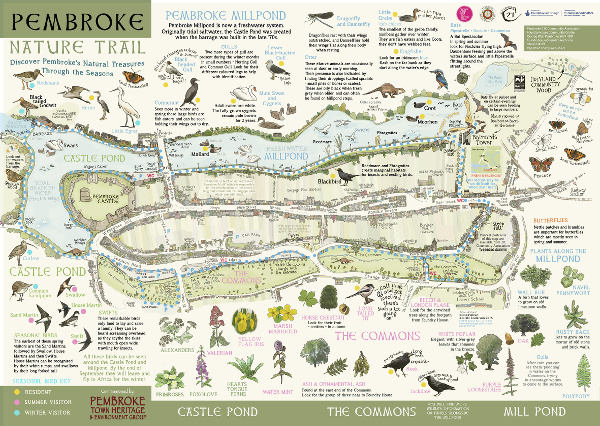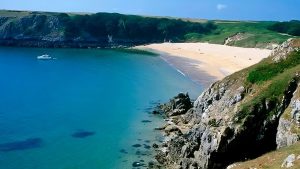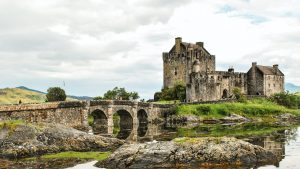
A natural history trail leaflet is available free of charge from the Foundry house in Pembroke. It takes the reader in a circular route round the town looking at many aspects of wildlife and nature – with an option of continuing on through the Holyland Wood (a 21C Community Association project) where there is a boardwalk trail through Alder Carr and Reedbed, or also with the option of returning to the small carpark via a top path through the old wood.
Pembroke Commons

Pembroke Commons was originally a small arm of the Cleddau estuary, and as it slowly dried out it became first marshland and then finally the common land that it is today. Long tailed tits can be seen moving through the trees beside the stream, jackdaws roost in the small plantation of trees by Monkton Bridge, and otters (though seldom seen) are known to regularly travel along the stream.
Castle Pond

The Castle Pond has only been a ‘pond’ since the barrage was built in the late 1970s. To the west of the barrage wading birds can be seen feeding in the mud sediments, and redshank, curlew, common sandpiper, little egret and kingfisher are frequently seen from the barrage. It is a delight during the summer when the weather is warm to stand and watch dozens of swallows swooping to feed low over the water, martins flashing past you on the wing, and swifts screaming as they slice through the sky above hunting food.
Pembroke Millpond

Pembroke Millpond is a good place to visit at any time of year. Swans are resident all year round, and cormorants and heron can usually be seen at the top end of the pond nearest to Barnards Tower. Little dab chicks bob and dive, coot dabble and moorhen weave elusively through the reeds. Otters are seen feeding here in daylight on occasion – if you watch patiently in twilight you may be lucky. If not then you will at least be rewarded by an aerial display from the bats which frequent the walk at dusk from early spring to late autumn. Daubenton’s bats fly low over the water to scoop up insects, pipistrelles nimbly fly through the trees overhanging the old town walls, and noctules fly high above.
The Upper Millpond

Pembroke Upper Millpond was created in the 1860s when a large embankment was created to carry the new Tenby to Pembroke Dock railway line, and was completed in 1863.
Over time the waters above the embankment have slowly silted up; but this has resulted in a wide range of creature habitats within a very small area of land. Between the stream (called the Pembroke River) at the end of Kingsbridge cottages and the embankment itself can be found alder carr, scrub, reedbed and open water. The area is most important for otters, while Cetti’s warbler and Reed warbler nest in the reedbed, and waders visit the pond when the water levels are right. At present it is difficult to see the pond itself except from a distance but this situation will be resolved in time.
The Pembroke Nature Trail








